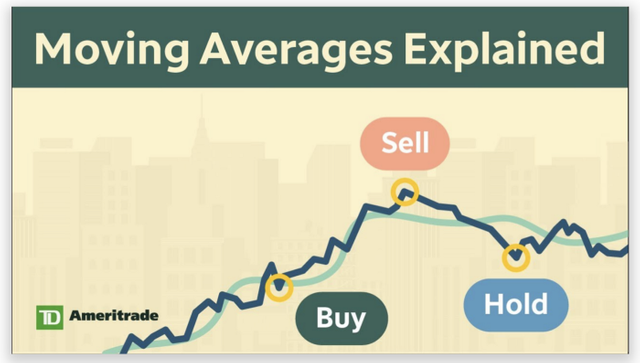Best Tradingview Indicators 2022- (Top 5)

Indicators are used to make predictions about which way the price of an asset will move. Trading indicators are mathematical tools that may assist traders in predicting the price movement of digital currencies with greater accuracy. The data from the formulas are then plotted on a graph and placed alongside or overlayed on a trading chart, allowing traders to make decisions.
What Are The Best Indicators For Crypto Trading?
1. Moving Average Convergence/Divergence (MACD)
The MACD, also known as the moving average convergence/divergence (MACD), is a widely used indicator for cryptocurrency trading. This is owing to its ease of use and ability to provide strong crypto trading signals.
The MACD is a trend-following indicator that assesses whether the short-term price momentum is following the long-term price momentum, and if not, it’s used to determine if a trend change is on the way. The MACD has four elements: the MACD line, signal line, zero line, and histogram.
To construct the MACD line, subtract the 26-EMA from the 12-EMA. The EMAs are used in place of MAs to improve sensitivity to trend changes and price momentum.
When the signal line is combined with the MACD line, as they converge, diverge and cross, it becomes the basis for many trading signals.
The MACD line is at zero when the zero line is reached. Both the 26- and 12-period EMA are at this level.
The MACD histogram displays the MACD line’s distance from the signal line. It may be positive when the MACD line is above the signal line or negative when the signal line is above the MACD.

When two oscillating lines cross, the following are some of the MACD common trading signals you may create:
-Bullish: where the MACD crosses above the signal line
-Bearish: where the signal line crosses above the MACD line.
Because these crossovers occur all the time, you could receive a lot of false positives.
As a result, rather than using these signals alone to generate trading decisions, it’s better to integrate them with others to enhance your results.
2. MYC Trading Indicator
The MYC Trading Indicator is a confidential indicator that combines trend analysis and momentum oscillators to determine when a cryptocurrency will enter a bullish or bearish trend with accuracy.
The trendline is a crucial element of the indicator, which reveals whether or not a long signal will be produced when the price rises, and whether or not a short signal will be printed when the price falls.
MYC, unlike the RSI or Bollinger Bands, not only advises a suggested exit point for traders to focus on but offers a recommended entry point as well.
3. Relative Strength Index (RSI)
The Relative Strength Index, developed by technical analyst Welles Wilder, helps traders determine when an asset’s price is too far from its “real” value, allowing them to profit before the market corrects itself.
Traders use the Relative Strength Index to identify excellent trading entry points, and over time, it’s shown to be a very valuable tool when trading volatile cryptocurrency markets.

The RSI determines whether an asset is overbought or undervalued based on a complicated formula.
The value ranges from 0 to 100 and may be indicated on the chart using an oscillator, which is essentially a wave pattern.
When an asset cools off for a short time, it’s simple to detect: the chart will enter overbought territory if the RSI is above 70.
4. Bollinger Bands
Bollinger Bands are a popular kind of technical analysis indicator created in the 1980s by John Bollinger, a financial analyst. They’re used by traders for technical analysis and function as an oscillator that measures market volatility.
The upper band, moving average line, and lower band of Bollinger Bands are designed to show the difference between a market’s high and low extremes. The two outer bands reflect market price fluctuations.

When volatility is high, they expand by moving away from the middle band. When volatility is low, they contract by moving closer to the middle band.
The centerline is set using a 20-day simple moving average (SMA) for the Bollinger Bands. The top and bottom bands are determined by market volatility, just as the upper and lower bands are.
5. Moving Averages (MA)
A Moving Average indicator is a form of smoothing used in the crypto market. The moving average (MA) is a lagging indicator, which means that it takes into account price movements from prior days.
The moving average is used to find trends and predict price movements.
There are two sorts of moving averages: simple and exponential.

The MA you choose depends on your trading style; if you’re a short-term trader, for example, a shorter one would be more beneficial to you. Moving averages act as supports or resistances in the markets.
The two most popular measures of the trend are MACD and its variants. Trend definition is straightforward for MAs since they can assist us in identifying a trend.
When the MA slopes upwards, it implies that the asset is moving upward at price. However, if the MA slopes downwards, this indicates that the asset you’re looking at is declining in value.
As always, do your own research and educate yourself before making any financial investments.
Crypto Currency, its digital money.